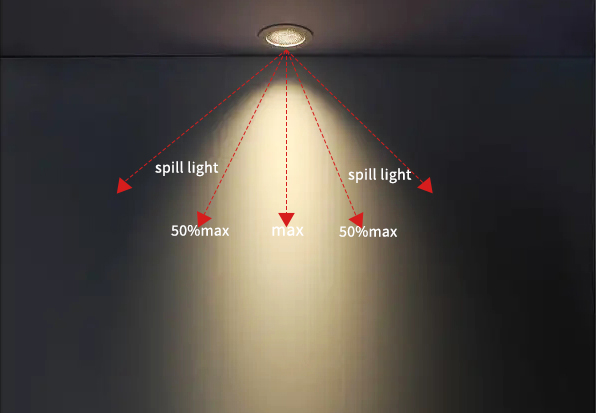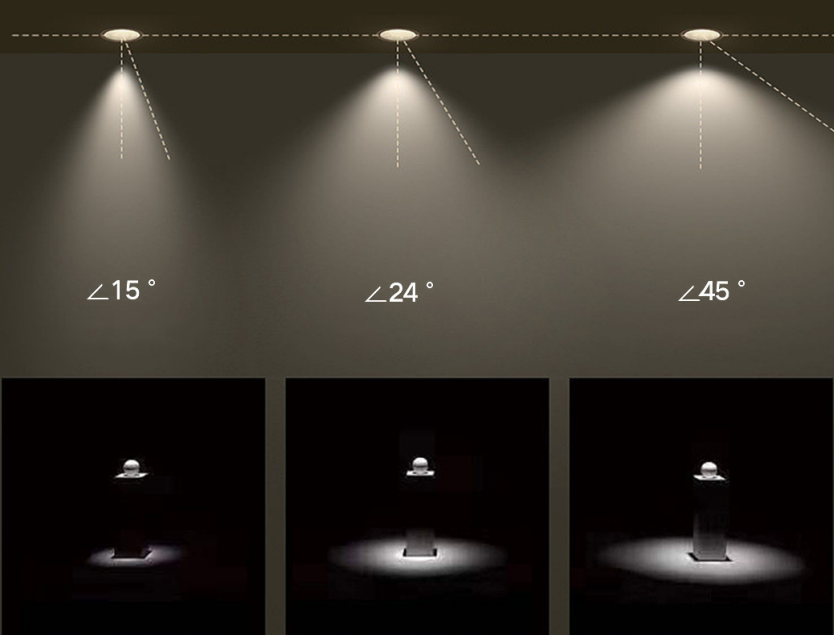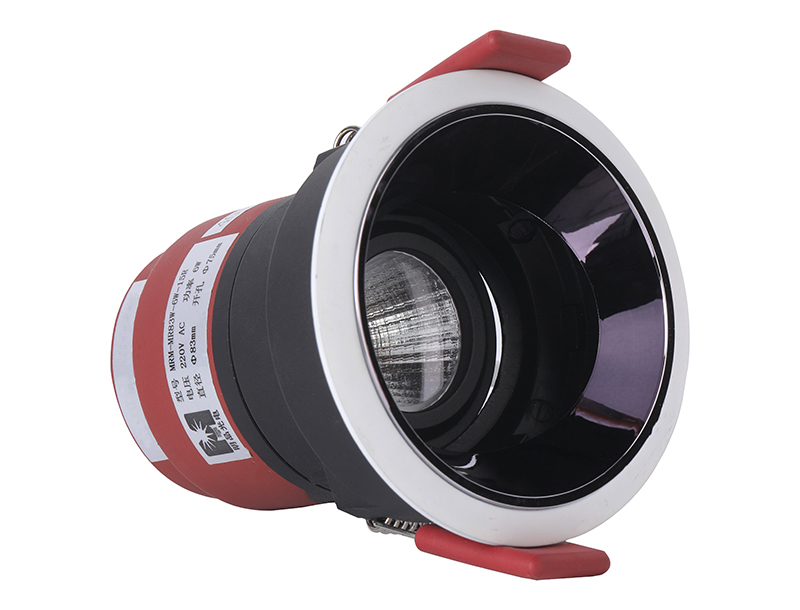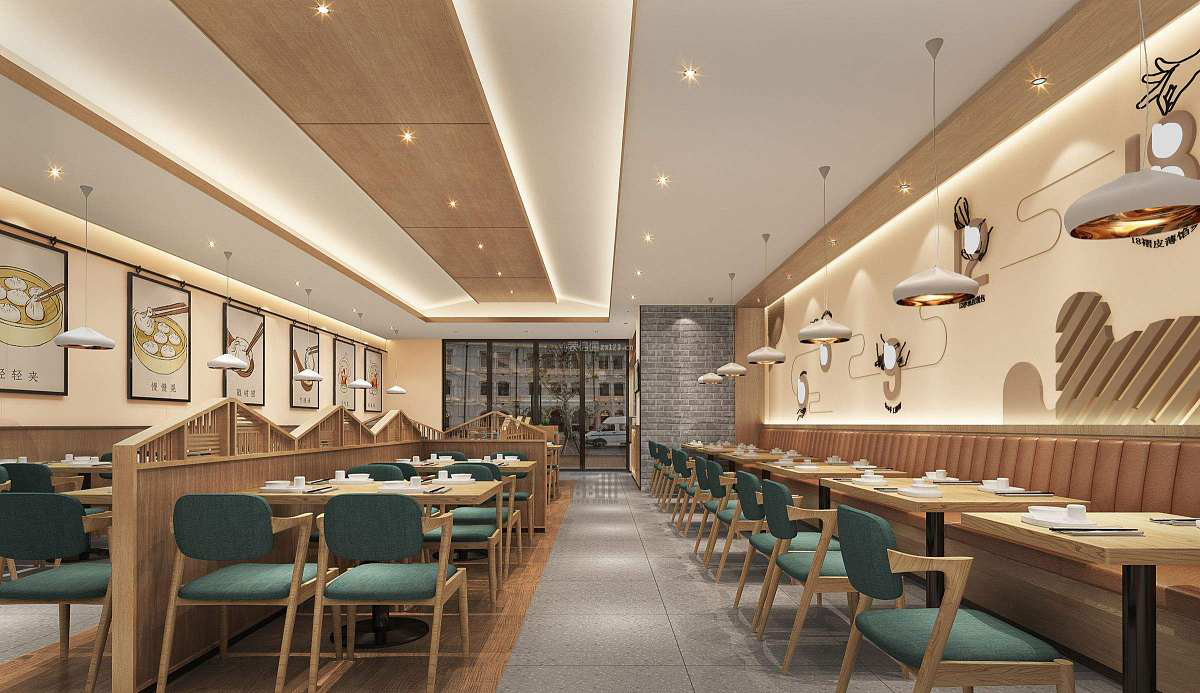Compared with home lighting, commercial lighting needs more lamps in both types and quantities. Therefore, from the perspective of cost control and post-maintenance, we need more professional judgment to choose commercial lighting fixtures. Since I am engaged in the lighting industry, the author will analyze from the professional point of view of optics, which aspects should start from when choosing commercial lighting lamps.
- First, the beam angle
The beam angle (what is the beam angle, what is the shading angle?) is a parameter that we must look at when choosing commercial lighting fixtures. Commercial lighting fixtures produced by regular manufacturers will also be marked on the outer packaging or instructions.
Taking a clothing store as an example, when we are doing decoration design, if we want to focus on displaying a certain piece of clothing, such as the clothes in the window position, we need accent lighting. If we use lamps with a large beam angle, the light will be too diffuse, causing Less than the effect of accent lighting.
Of course, we usually choose spotlights in this scenario. At the same time, the beam angle is also a parameter we must consider. Let’s take spotlights with three beam angles of 10°, 24° and 38° as examples.
We all know that spotlights are almost indispensable in commercial lighting, and there are many options for beam angles. The spotlight with a beam angle of 10° produces a very concentrated light, just like a stage spotlight. The spotlight with a beam angle of 24° has a weaker focus and a certain visual impact. The spotlight with a beam angle of 38° has a relatively large irradiation range, and the light is more scattered, which is not suitable for accent lighting, but is suitable for basic lighting.
Therefore, if you want to use spotlights for accent lighting, under the same power (energy consumption), the same projection angle and distance (installation method), if you want to use spotlights for accent lighting, we recommend choosing a 24° beam angle.
It should be noted that lighting design needs to involve a wide range of aspects, and space functions, illuminance, and installation methods need to be considered.
Second, illuminance, glare and secondary spot.
Since it is commercial lighting, our core purpose is to give customers a better experience and stimulate consumption. However, many times, we will find that the lighting design of many commercial places (supermarkets, restaurants, etc.) will make people very uncomfortable, or they may not reflect the characteristics and advantages of the products themselves, thus making people have no desire to consume. In a high probability, the inappropriateness and discomfort mentioned here are related to the illumination and glare of the space.
In commercial lighting, coordinating the relationship between basic lighting, accent lighting and decorative lighting can often produce a variety of different effects. However, this requires professional lighting design and calculation, as well as good light control technology, such as the combination of COB + lens + reflection. In fact, in the light control method, lighting people have also experienced a lot of changes and updates.
1. Control light with astigmatism plate, which is a common method in the early stage of LED development. It has high efficiency, but the direction of light is poorly controlled, which is prone to glare.
2. The large lens refracts the square to control the light, which can control the beam angle and direction very well, but the light utilization rate is relatively low, and the glare still exists.
3. Use a reflector to control the light of COB LEDs. This method solves the problem of beam angle control and glare, but the light utilization rate is still low, and there are unsightly secondary light spots.
4. It is relatively new to think COB LED light control, and use lens and reflector to control light. This can not only control the beam angle and glare problems, but also improve the utilization rate, and the problem of secondary light spots has also been solved.
Therefore, when we choose commercial lighting lamps, we should try to choose lamps that use lenses + reflectors to control light, which can not only produce beautiful light spots, but also get better light output efficiency. Of course, you may not understand what these so-called light control methods mean. It doesn’t matter, you can ask them when you are choosing lights or hiring lighting designers to do the design.
Third, the material of the optical device, temperature resistance, light transmittance, weather resistance
Aside from other things, from the perspective of lens alone, the mainstream material of commercial lighting fixtures we use today is PMMA, commonly known as acrylic. Its advantages are good plasticity, high light transmittance (for example, the light transmittance of 3mm thick acrylic lampshade can reach more than 93%), and the cost is relatively low, it is more suitable for commercial lighting, and even commercial places with high lighting quality requirements .
Postscript: Of course, lighting design is not only about selecting lights, it is a job that is both technical and artistic. If you really don’t have the time and expertise to DIY lighting design, please contact us to provide you with professional guidance!





